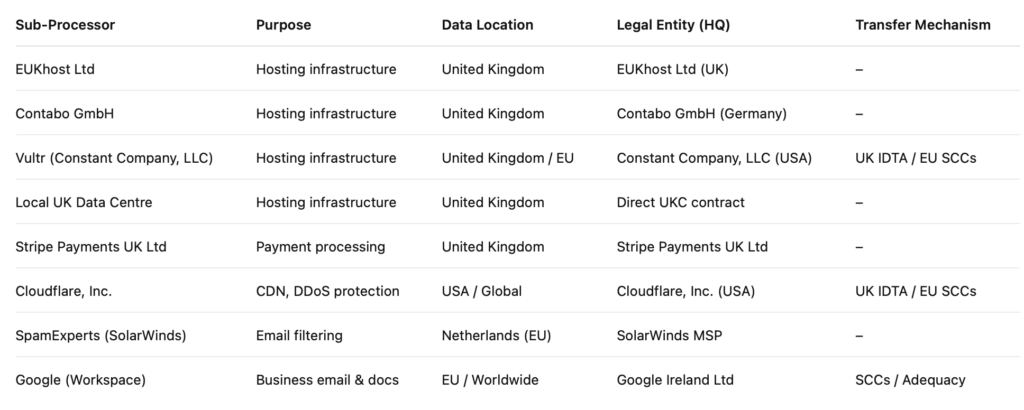
We’re pleased to announce that you can now add DKIM (DomainKeys Identified Mail) records directly through the Client Area DNS Manager for all parked domains.
What is DKIM?
DKIM is an industry-standard email authentication system that helps protect your domain name from being used for spam or phishing. It works by digitally signing outgoing messages so that receiving mail servers can verify they were genuinely sent from your authorised mail source.
When DKIM is active:
- Your emails are less likely to be marked as spam
- Recipients can trust that messages really came from you
- Your domain reputation and deliverability improve
How it Works
Every DKIM setup uses two keys:
- A private key, stored safely on the mail server that sends your messages
- A public key, published in your domain’s DNS as a TXT record
When an email is sent, your mail server signs it with the private key. The receiving system checks that signature using the public key in your DNS.
Adding DKIM in the Client Area
If your mail service (for example Google Workspace, Microsoft 365, or your own server) provides you with a DKIM record, you can now publish it in just a few clicks.
- Log in to your Client Area at https://www.uk-cheapest.co.uk
- Go to Domains → Manage Domain → DNS Manager
- Add a new TXT record
- Host/Name: the DKIM selector (for example, default._domainkey)
- Value: the full DKIM record starting with v=DKIM1; k=rsa; p=…
- Save changes and allow a few minutes for DNS to update
Once published, your mail provider’s DKIM checks should confirm that your domain is correctly authenticated.
Frequently Asked Questions
1. Do I need to set up DKIM for my domain?
If you send email using your domain name, yes – DKIM is strongly recommended. It helps protect your domain’s reputation and improves email delivery by verifying that messages weren’t altered in transit.
2. Where do I get my DKIM record?
Your DKIM record is generated by your email provider or mail server. For example, Google Workspace, Microsoft 365, or your web hosting control panel will each provide a v=DKIM1; p= record that you can copy and paste into your DNS Manager.
3. How long does it take for DKIM to start working?
Once you add your DKIM record, it can take anywhere from a few minutes to a few hours for DNS propagation. After that, emails sent from your domain should show as “signed” when checked by online DKIM testers.
4. Can I use DKIM on a parked domain?
Yes. Even if your domain is parked, you can add DKIM records in advance or if you’re routing mail through another system. This is especially useful for protecting your brand from spoofed messages.
5. What if my DKIM record doesn’t validate?
Check that your record is added as a single TXT entry, with no extra spaces, quotes, or missing characters. If you’re unsure, open a support ticket – our team will review your DNS record and help you get it verified.
Need Help?
If you’re unsure which DKIM record to use or your provider’s verification fails, open a support ticket and our team will review your DNS settings for you.
Tip: It’s normal to paste a DKIM record generated on another mail system into your DNS – just make sure it’s copied exactly as provided.
For further guidance, visit your email provider’s DKIM documentation or contact us anytime through the Client Area Support Centre.


